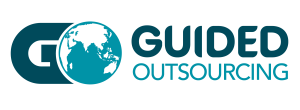
Outsourcing is often painted as the silver bullet for scaling businesses. It promises efficiency, cost reduction, and access to global expertise, all appealing propositions in a competitive market. But behind this seemingly perfect business move lies a darker side that too many companies discover too late. Beneath the shiny pitch decks and low-cost promises lurk the stories of failed projects, lost investments, data breaches, and shattered reputations—what we’ll call outsourcing horrors. This article unpacks the outsourcing horror stories businesses don’t often share publicly, so you can avoid making the same mistakes.
Why We Need to Talk About Outsourcing Horrors
Most companies approach outsourcing with optimism, and rightly so. It’s a proven model that drives efficiency, especially for startups and SMEs that need to scale without inflating costs. Business leaders often talk about how outsourcing saves money, not how it can destroy value when done wrong.
The reality is that outsourcing horror stories are predictable consequences of poor strategies, weak contracts, and a lack of cultural and operational alignment. These are not stories of “bad luck.” They’re stories of avoidable failure.
Understanding these horror stories is about foresight. The more you know about what can go wrong, the more power you have to prevent it.
Outsourcing Horror Stories and What They Teach Us
We learn best when we see how others have failed. Below are some of the most instructive outsourcing horror stories that we’ll unpack what went wrong in each.
1. Ghosted Projects: When the vendor vanishes
Scenario: A U.S.-based startup outsources its web platform development to a small offshore team. Everything starts smoothly. Deadlines are met, progress reports look promising, and early mockups are impressive.
Then, one month before launch, the vendor suddenly stops responding. Emails go unanswered. Calls ring endlessly. The project files? Stored on their private servers, now inaccessible. The entire system is locked behind credentials the client doesn’t own.
The startup’s investors are furious. Marketing campaigns already launched. The platform is dead in the water. By the time the founders hire another developer to salvage the work, they’ve lost time, reputation, and tens of thousands of dollars.
Lessons:
- If your vendor can disappear, your contract, escrow, and structure are too weak.
- Always establish shared access from day one—repositories, documentation, and credentials must be under your control. Contracts should include milestones tied to deliverables, not trust alone.
2. Data Breach Disaster
Scenario: A financial services firm has decided to outsource its back-office accounting and data management. The vendor promises tight security but fails to implement proper access control.
Months later, a junior contractor accidentally sends sensitive client data to an unsecured shared drive. The breach triggers regulatory scrutiny and forces the firm to issue an embarrassing disclosure to clients. Legal costs and brand damage outweigh any prior savings.
Lesson: Your vendor’s security is your security. Ensure compliance with data privacy laws (like GDPR or HIPAA if applicable). Encrypt data, audit permissions, and never share unrestricted credentials.
3. The Budget Black Hole
Scenario: A mid-sized eCommerce retailer decides to outsource its customer support operations overseas. The initial proposal looks promising: cut costs by 40%, with around-the-clock coverage.
Three months in, the savings vanish. “Hidden costs” emerge: training, software licenses, management oversight, communication tools, and escalating exchange rates. Suddenly, the outsourced operation costs more than the in-house team.
Even worse, customer satisfaction drops due to inconsistent handling and slow escalations. Complaints multiply, social media reputation takes a hit, and sales dip by 15%.
Lesson: Low hourly rates don’t equal low total cost. Factor in all hidden costs—onboarding, supervision, technology, and quality control. Outsourcing should simplify, not complicate, your finances.
4. The Cultural Collision
Scenario: A creative agency based in London outsources its design and content creation to an offshore team. The team is talented, but creative interpretations don’t align.
What was meant to be “subtle humor” becomes “awkward messaging.” Designs miss cultural nuances. Emails get misinterpreted. The result? Delays, revisions, and frustrated clients.
It’s not about talent, it’s about context. Creativity requires cultural fluency, not just skill.
Lesson: Cultural understanding can make or break an outsourcing relationship. Regularly align on tone, brand voice, and audience expectations. And if you’re outsourcing creative work, find partners fluent not just in English, but in your market’s sensibilities.
5. The Endless Project
Scenario: A tech company outsources the development of a custom internal tool. The vendor keeps promising “just two more weeks.” Each sprint reveals new bugs or features that “need tweaking.” Months stretch into a year, and the project is still incomplete.
When leadership finally audits the project, they find fragmented documentation and no version control. The vendor blames shifting requirements; the client blames poor project management.
Lesson: Never start an outsourcing engagement without a clear scope, deliverables, and change management process. “Just one more feature” is how deadlines die.
6. The Ethical Nightmare
Scenario: A global brand outsources its content moderation to a third-party service in another country. Employees there are paid minimum wage to review violent or disturbing material for hours daily.
One day, a whistleblower goes public, revealing poor working conditions and lack of psychological support. The global brand faces backlash, not for the decision to outsource, but for failing to ensure humane conditions for those doing the work.
Lesson: Ethical outsourcing is not optional. You’re responsible for the conditions under which your outsourced work happens. Choose partners who value human wellbeing, not just deliverables.

Causes Behind Outsourcing Horrors
Behind every outsourcing horror story are predictable causes. Knowing these gives you foresight to detect trouble early.
Here’s why benefit from professional social marketing services:
1. Misaligned incentives & hidden dependencies
You and the vendor don’t always share goals. What’s good for them (e.g., maximizing billable hours, limiting scope creep) may hurt you.
- Vendors may low-ball the project estimate, then expand scope or argue change orders.
- Once they’re embedded, you (the client) become dependent—they become a “single point of failure.”
- You lose negotiation leverage over time.
2. Scope ambiguity and feature creep
Projects often begin with vague specs—“Build us a dashboard” or “Manage our key accounts.” Over time, more features and changes get tacked on without clear governance.
- Without a change control system, the vendor makes assumptions or delays features.
- The client adds “just one more thing”—the vendor says yes, and before long the entire architecture shifts.
3. Loss of control & oversight
With distance comes opacity.
- The client stops seeing daily operations. Communications become high-level but superficial.
- Vendor teams may be siloed. You don’t know who’s doing what; you can’t peer into weak sub-contractors.
- Poor alignment of reporting, metrics, or transparency means you only see outcomes, not failures in progress.
4. Poor vendor selection & due diligence
One of the biggest failure vectors: choosing the wrong partner.
- Trusting marketing claims without digging into customer references, turnover, or code audits.
- Picking by cost rather than competence.
5. Hidden costs & overshooting budgets
Outsourcing is often sold as “cost saving,” but hidden costs can nullify that.
- Transition costs, training, coordination, travel.
- Overtime, special tools, software licenses, integration costs.
- Overheads, compliance expenses, legal complexities.
- Medium-to-long-term contracts may include annual escalations, lock-ins, or penalties.
6. Communication and cultural friction
Distance, language, cultural norms—all become friction points.
- Misunderstood instructions, idioms, subtleties lost in translation.
- Work ethic, responsiveness, stakeholder expectations may differ.
- In a widely cited outsourcing risk analysis, communication barrier is among the top issues.
- Even in software projects, usability suffers when remote developers don’t fully understand user context.
7. Staff turnover & continuity risk
Your vendor is not your employee—they may churn, reorganize, or have competing priorities.
- Mid-project staff changes are extremely destabilizing.
- The person who knows your architecture may leave; the replacement inherits gaps and context loss.
- Commitment drops if the relationship was never tight.
8. Security & IP exposure
Outsourcing extends your risk surface:
- Credentials, access rights, data pipelines, code repositories—all vulnerable.
- If vendor is in another jurisdiction, you have to consider local laws, compliance regimes, cross-border data agreements.
- Intellectual property (IP) theft, copying, and leakage are real.
9. Over-optimistic planning & black-swan risk
A seminal study of 1,471 IT projects found that while average cost overrun was 27%, one in six projects had 200% overrun and 70% schedule slip. That “fat tail” risk is exactly the danger in outsourcing large, complex work.
- You expect 10–20% buffer; reality bites with 2x or 3x.
- The vendor may hide risk until it’s too late.
- Structural complexity (many modules, integrations, dependencies) magnifies unpredictability.

How to Prevent Outsourcing Horrors
If the horror stories and risks scare you, that’s good—it should. But fear without a plan is paralyzing. Here’s the architecture you should build from day one to keep your outsourcing relationship stable and resilient.
1. Choose partners, not vendors.
You’re not buying a service—you’re entering a relationship. Choose partners who understand your goals, not just your budget.
- Conduct thorough due diligence.
- Ask for references and case studies.
- Run a small pilot project first.
2. Document everything.
From contracts to project management systems, documentation is your insurance.
- Define deliverables, milestones, and acceptance criteria.
- Include change request processes and exit clauses.
- Require transparency—access to code, credentials, and data.
3. Communicate like you’re in the same building.
Distance shouldn’t mean detachment.
- Hold weekly check-ins and sprint reviews.
- Use shared tools like Slack, Jira, or Asana.
- Foster an open culture of feedback.
4. Invest in security from day one.
Outsourcing expands your digital footprint—and your vulnerability.
- Encrypt sensitive data.
- Limit access by role.
- Conduct regular audits.
- Include data protection obligations in contracts.
5. Align on culture and values.
Partnerships thrive when teams share principles.
- Introduce your vendor to your brand’s tone and vision.
- Celebrate small wins together.
- Build mutual respect—it reduces friction and builds trust.
6. Track KPIs that actually matter.
Track productivity, accuracy, and satisfaction—not just cost savings.
- Use measurable service-level agreements (SLAs).
- Set clear success metrics tied to outcomes.
- Review and adjust quarterly.
Building a Resilient Outsourcing Mindset
The best companies don’t fear outsourcing—they master it. They understand that outsourcing isn’t a shortcut; it’s a partnership that demands structure, empathy, and shared purpose.
Here’s how to think like a resilient outsourcing leader:
- Think of the vendor like an extension of your team
They should share your product vision, KPIs, and culture, not just respond to orders.
- Don’t outsource core strategic functions
Use outsourcing for repeatable, well-defined, lower-risk tasks. Keep mission-critical, differentiating functions in-house or in trusted joint ventures.
- Treat overlap as “shared degeneracy zone”
Expect friction zones—overlap in ownership, boundaries, transitions—and design interaction rituals upfront.
- Keep your internal competence
Even when you outsource, maintain internal SMEs (subject matter experts) who understand the project, can audit, and can step in if vendor fails.
- Never outsource your oversight
You can’t outsource your governance, vision, or accountability. Your leadership must stay fully engaged.
- Use “optionality” as a design principle
Design contracts, modular systems, and architectures such that you can switch vendors or insource gradually if needed.

Conclusion
Every outsourcing horror story carries a hidden value: the lesson of what NOT to repeat. For every failed project, there are hundreds of success stories where businesses and outsourcing teams work hand in hand, across time zones and cultures, building something remarkable together.
The difference between the two? Preparation, governance, and empathy.
At Guided Outsourcing, we’ve seen how the right foundation—clear goals, mutual trust, and transparency—turns outsourcing from a risk into an advantage. Horror stories exist to teach us better ways to build, communicate, and collaborate.
Don’t wait for the nightmare. Build your outsourcing strategy on foresight, not fear, and your story will be one worth telling.

